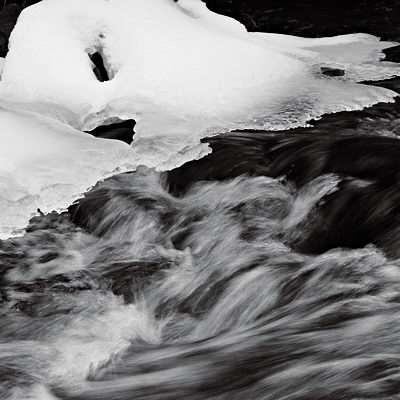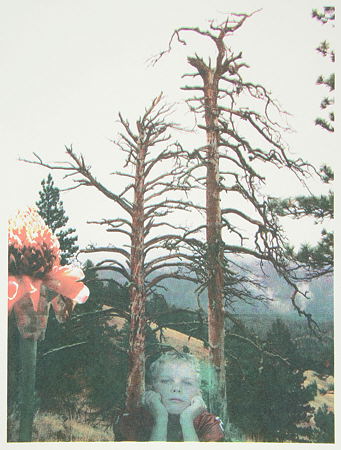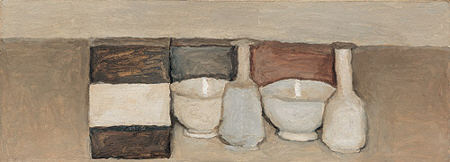Posted by Steve Durbin on April 27th, 2009
I drove through parts of Yellowstone a week ago, just a day after the Park (as it’s known locally) opened to automobiles. (I had been hoping to bike in the car-free weeks before that, as I normally do, but the weather was uncooperative.) Despite my regular visits, and posts to this blog, I realized I’ve never shown any photographs of the thermal features for which Yellowstone is justly famous. I have made a few before—surprisingly few—but somehow they never appealed much to me. For some reason I can’t put my finger on, this time felt different, and there are several images I’m willing to publish.

more… »
Posted by Steve Durbin on March 24th, 2009
June’s recent post about trying to gain a sense of personal expressiveness in one’s landscapes—which, on the face of it, are more about the place out there than the one in here—set off resonances. All the more so as I had just returned from a day in the mountains where I had gathered one of my more coherent set of photographs in a mode (style?) I feel I’ve been seeking for some time (all in one 10-minute stint, the only halt of the trip). And then her mentions of Wood and Hockney added to the echoing cacophony.
 1
1
more… »
Posted by Steve Durbin on March 2nd, 2009
I guess it’s natural for a photographer working in black and white to notice where things fall on the continuum between the two. Though all shades of gray are lovable, it’s more the extremes that seem to win my heart. It’s the attraction of pure yin and yang. It’s therefore a special delight when winter brings a reversal of this duality in one of my favorite subjects, namely streams and their ilk. Once there’s snow on the ground and ice forming on the bank, the water itself turns dark, just the opposite of the typical summer pattern of white water amid dark rocks or ground. Since a trip a couple months back along a local stream after the first big snowfall, I’ve been contemplating a series I tentatively called Black water. The early images didn’t seem especially promising, but I never found time to take a good crack at it.
 1
1
more… »
Posted by Steve Durbin on February 3rd, 2009
I’ve been too busy too long, but I have accomplished one thing the last few weeks: with another artist, Kerry Corcoran, I submitted a proposal for an exhibit at a local public space. I got the idea when I realized that Kerry and I found the same subjects appealing: trees, especially bare ones. But we work in such different media—printmaking and photography—that the show becomes as interesting for the contrast of approach as for the intrinsic interest of the subject. Following are images from the abbreviated application (some of mine may look familiar from my Cottonwood series); the actual show (if accepted) would have about twice as many. For the moment, we’re calling it In Praise of Trees.
1
2
more… »
Posted by Steve Durbin on January 4th, 2009
I’ve been photographing horses for well over a year now, and I’m feeling it’s time to put together a show, or at least a portfolio. I would be happy just continuing to make photographs indefinitely, but I’d be happier grappling with the work in another way as well, reviewing it and thinking about it and looking for themes or ideas. A few thoughts have been mentioned in previous posts, but none has risen to the level of forming the backbone of a potential statement. Perhaps the most striking thing to emerge from my photographs is a lack of interest in anything resembling a classic, noble, iconic western horse. In fact, I notice that none of the images selected for this post even depicts an entire animal (though I have some that do).
One thing I realized in the course of the recent Morandi discussions is that the edges of the bodies are often blurred, or more generally obscured, either through intervening snow or grass…
more… »
Posted by Steve Durbin on December 2nd, 2008

It’s been instructive to continue experimenting with photography à la Morandi: not attempting to imitate, but rather to explore some of the themes he seems to be working with, or at least what I find myself working with as I go about it. One thing I realized looking at more of his pictures, both online at the Metropolitan and the Morandi Museum, and also in a book found at the library, is that he was often interested in the modeling of masses by the light falling on him. This was contrary to my impression from the quite flat images that seem to be more common. Perhaps working in both modes was his own form of experimentation.
more… »
Posted by Steve Durbin on November 28th, 2008

Birgit’s post and subsequent discussion on Giorgio Morandi has inspired me to try my hand at the same subject using photography. Not with the goal of trying to create an imitation Morandi, but more as an exploration for myself of some of the same ideas I see and enjoy in his paintings. I don’t claim these are necessarily Morandi’s ideas, but I think the process will certainly help me understand his work better. Essentially, I am taking up again the concept of studio as laboratory.
more… »

 1
1 1
1


